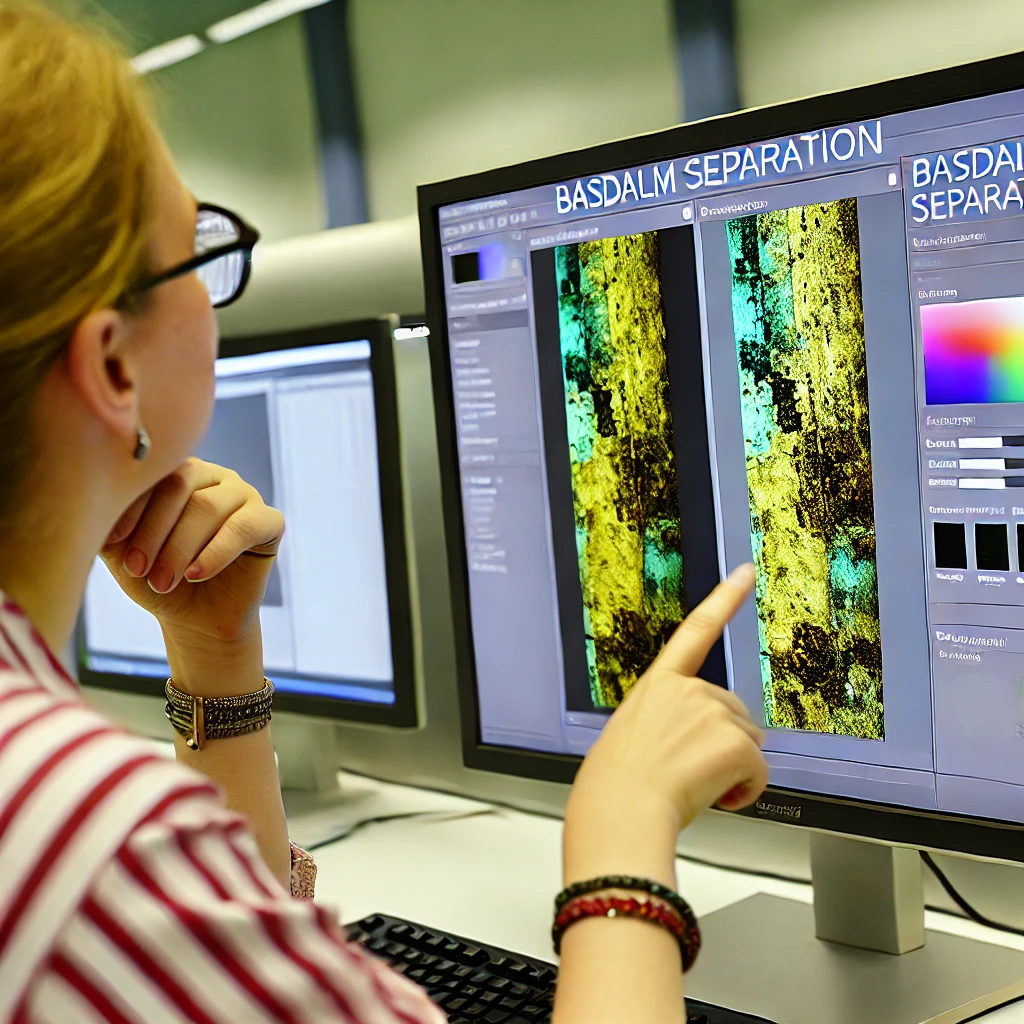Image processing is a dynamic field that continuously evolves as technology advances. One of the innovative techniques in this domain is Basdalm separation, a method used to enhance image analysis by isolating specific components within an image. This blog post delves into the intricacies of Basdalm separation on images, explaining its importance, methodology, applications, and sharing a user’s experience to highlight its practical impact.
What is Basdalm Separation?
Basdalm separation refers to the process of distinguishing and isolating various elements within an image based on predefined criteria such as color, intensity, or spatial characteristics. This technique is crucial in fields where precise image analysis is necessary, such as medical imaging, remote sensing, and automated quality control systems.
Understanding the Technique
The principle behind Basdalm separation involves several steps, each tailored to enhance the visibility and distinguishability of certain features within an image. Here’s how it typically works:
- Image Preprocessing: Initially, the image undergoes preprocessing to enhance its quality. This may include noise reduction, contrast enhancement, and color correction to ensure that the subsequent steps are effective.
- Feature Detection: Using algorithms, the system identifies specific features within the image. These could be edges, textures, or particular shapes relevant to the analysis.
- Component Isolation: After identifying the features, the technique isolates them from the rest of the image. This isolation allows for more detailed study and analysis of those features without background interference.
- Post-Processing: Finally, the system may further process the isolated components to enhance clarity or prepare them for analysis, such as scaling, rotating, or applying other morphological transformations.
Applications of Basdalm Separation
- Medical Imaging: In medical imaging, Basdalm separation can help in isolating tumors from MRI scans or enhancing blood vessel images from angiographic studies.
- Automated Inspection Systems: In manufacturing, this technique can isolate defects like cracks or misalignments on assembly lines.
- Remote Sensing: For environmental monitoring, it can separate different landforms or vegetation types in satellite images.
User Experience: A Case Study
John, a digital imaging specialist working in dermatology, uses Basdalm separation to enhance the clarity of skin lesion images. “The capability to identify a lesion properly from encompassing epidermis texture considerably increases our diagnostic reliability,” he says. “It’s akin to sharpening in on precisely the thing you need to study, making actually the subtlest distinctions sharper and more quantifiable.”
John’s experience underscores how Basdalm separation is not just about the images but also about the real-world outcomes those images can influence, such as accurate and early diagnosis.
Best Practices in Basdalm Separation
- Quality of Input Images: Ensure high-quality input to get reliable outputs. Poor quality images can lead to inaccurate separations.
- Algorithm Selection: Choose the right algorithms based on the image characteristics and the features you need to isolate.
- Regular Updates: Keep the image processing software updated to incorporate the latest improvements and bug fixes.
Streamlining Workflows with Basdalm Separation
Furthermore, Basdalm separation is instrumental in streamlining workflows across various industries. In sectors like automotive manufacturing, where precision is paramount, the ability to quickly and accurately isolate parts of an image for inspection reduces downtime and enhances productivity. For instance, operators can swiftly identify anomalies in x-ray images of welded joints, facilitating immediate corrective actions. This reduction in response time not only improves the manufacturing process but also significantly lowers the risk of costly recalls.
Enhancing Research with Precise Image Analysis
Moreover, the role of Basdalm separation extends beyond industrial applications into the realm of academic and scientific research. Researchers in fields such as environmental science and archaeology rely on precise image analysis to study changes in landscapes or uncover hidden structures in excavation sites. By isolating specific elements within satellite images or aerial photography, scientists can conduct more detailed analyses and consequently draw conclusions with greater accuracy. Furthermore, this capability is crucial for effectively monitoring climate change impacts, efficiently managing natural resources, or understanding historical site layouts without the need for intrusive physical exploration.
The Evolution of Image Processing Techniques
As technology progresses, so too does the sophistication of image processing techniques like Basdalm separation. The development of more advanced algorithms and the increasing power of computational tools dynamically drive this evolution. Additionally, the integration of artificial intelligence and machine learning into Basdalm separation processes marks a significant trend. Consequently, these technologies allow for more intuitive and adaptive image analysis, which can learn from past data to significantly improve future performance. This continuous improvement cycle not only refines the process but also expands the potential applications of Basdalm separation in various fields.
Practical Implications and Future Outlook
Looking ahead, the practical implications of Basdalm separation are vast. Moreover, as more industries begin to realize the benefits of precise image analysis, the demand for this technology is likely to surge significantly. This increase in adoption will drive further innovations, making the technique even more effective and accessible. For professionals working with image processing, staying abreast of these developments is essential. Additionally, engaging with ongoing training and professional development opportunities will ensure they can effectively leverage the latest tools and methodologies to maintain a competitive edge.
FAQs about Basdalm Separation
Q1: How does Basdalm separation differ from other image processing techniques?
A1: Unlike general filtering or enhancement, Basdalm separation focuses specifically on isolating parts of an image for detailed analysis.
Q2: What are the common challenges in Basdalm separation?
A2: Challenges include handling diverse image qualities, choosing appropriate algorithms for different image types, and managing computational resources efficiently.
Q3: Can Basdalm separation be automated?
A3: Yes, with the right setup and algorithms, you can fully automate Basdalm separation, making it suitable for real-time image processing applications.
Conclusion
Basdalm separation serves as a powerful tool in the arsenal of image processing techniques, offering precise control over the isolation and analysis of image components. Moreover, its applications span across various industries, thereby proving its versatility and effectiveness. By understanding and implementing this technique, professionals can significantly enhance their analytical capabilities, leading to better outcomes in their respective fields.

